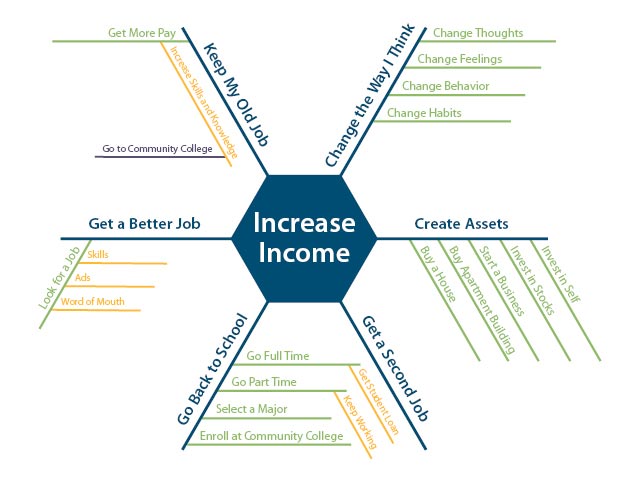Not everything that can be counted counts, and not everything that counts can be counted. – Albert Einstein
Albert Einstein did not consider himself to be very intelligent and many of his teachers echoed that thought. What made him so successful was his ability to sort things out and understand what should and should not be counted as important when solving a problem.
Sometime later came W. Edward Deming the manufacturing guru and statistician who once said “In God we trust, all others must bring data.” In this post we will discuss the importance of analyzing that data in the critical thinking process.

Once you have gathered all of the relevant information about your problem, you need to do something with it. Simply having or knowing the information is not enough to finish the critical thinking process. The next step is to analyze, or break down the information. Begin by organizing the information in a way that makes it easier to understand. Then, look closely at the separate pieces of information. Do you see any patterns or trends? Analyzing information gets you one step further along the critical thinking process.
Think about a time when you had a big test coming up. In order to prepare for the test, did you try to cram all of the information in all at once? Probably not. Chances are you broke up the information into sections, or perhaps the information was already organized into units when your teacher taught you the information in class. That’s because large amounts of information are much easier to analyze and understand when they are broken up into smaller chunks.

Analyzing information brings order to the critical thinking process and the large amounts of information you will go through. When you feel stressed out by the amount of information you have to work with, follow these five steps for analyzing information for critical thinking:
1. Develop classifications
2. Sort the information
3. Rate the information
4. Rank the information
5. Organize the information into a Mindmap
Develop classifications. Think of developing classifications as making up the rules for a game, where the game is analyzing information. Developing classifications or rules means that you decide how to sort, rate and rank information. This will help you with the rest of the analyzing information process.

To develop classifications, start by answering the following three questions:
1. What is the reason for developing the classification?
2. What information do you need?
3. How can you keep your classification system simple?
Sort the information. Sorting information simply means that you are dividing the information into the groups or classes that you came up with in Developing Classifications. The information within each group must share some common characteristic, or feature in order to be grouped together.
In the example of sorting information to prepare for a test, the common characteristic could be the topic, unit, or even the time period. You can sort the information into as many groups as it takes to more easily understand and find the information when solving the problem or making your decision.
When sorting information, not everyone will sort information based on the same characteristics, and that’s okay. It doesn’t matter how you sort the information, as long as the information within the groups share the same characteristics and they make sense to you so you don’t get confused later.

Rate the information. Now that you have sorted the information into groups you can rate the information, or assign to it a number, word or letter grade that describes the information. Look at the individual pieces of information within each group and figure out how to rate the information.
Think about the review question where you sorted the different food items into food groups. This information could be rated based on the nutritional value of each group, your personal preference for each group or how much of each group you should eat every day. Depending on the problem you are trying to solve you will need to decide how to rate each group of information.
Rank the information. You already have experience ranking information, probably without even thinking about it! For example, when trying to decide on a restaurant to go to, you think about all of the possible restaurants, compare the restaurants to one another and then choose your favorite. This is the same process you would use to rank information for analyzing information.
To rank means to put information in order according to a score or rating. So once you have rated the information, you can begin to rank the information. This does get confusing, since both rating and ranking require you to assign a value or score, however there is one key difference that will help you keep them straight. While rating information compares each group to a fixed score or baseline, ranking information compares each group to the other groups.

Organize the information into a Mindmap. At this point in the critical thinking process, you have gathered all of the information and analyzed the information by sorting it, rating it and ranking it. Organize the information in a way that will help to better understand it. A Mindmap is a great tool for organizing information in a visually helpful way. You can actually see the groups the information has been broken down into and how each group or category relates to the other categories.

Here are four steps to organize your information into a Mindmap:
Step 1: Start at the center and state the problem you are trying to solve.
Step 2: Draw branches or lines out from the center with the information you’ve gathered, including the who, what, when, where and why that you discovered.
Step 3: Draw branches for each group you created in Sorting Information.
Step 4: Make connections based on the ratings and rankings that you assigned to each group in
Want to learn more about soft skills? Try our free course on attitude with Conover Resources.
